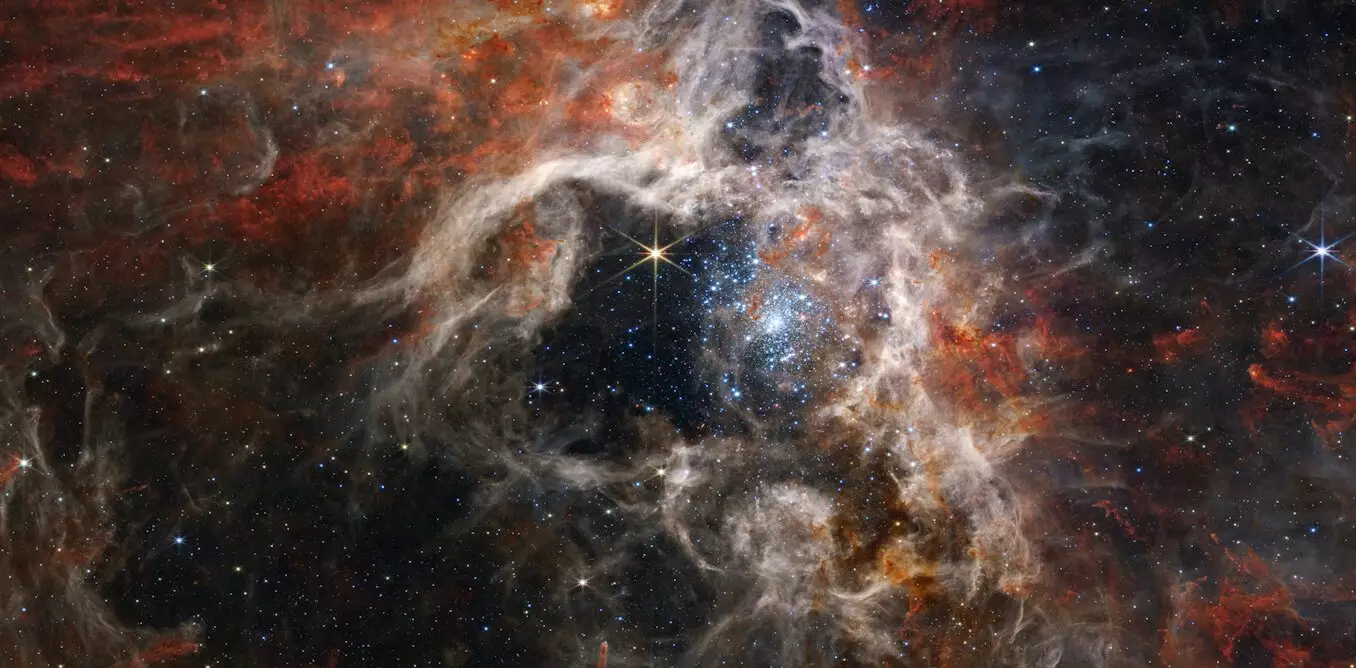At a whopping 13.7 billion years old, the universe exudes an aura of stability, an impression that has shaped our understanding of cosmic evolution. However, this seemingly placid reality may be a delicate facade, precariously perched on the brink of upheaval. Recent advancements in particle physics, particularly concerning the Higgs boson, draw attention to an underlying vulnerability that could pose dire risks to the fabric of reality itself. It is here, in the intricate dance of particle interactions and quantum states, where the seeds of cosmic instability may lie.
The Higgs boson, pivotal in assigning mass to elementary particles, operates through a field that permeates space, often abstractly likened to a tranquil water surface. While we’ve enjoyed millennia of consistent physical laws, new theories challenge the notion that the Higgs field is anchored in its most stable state. This understanding raises critical questions about what might happen if the Higgs transitions to a lower energy configuration, a phenomenon likened to water vaporizing into steam. Such a phase transition could radically alter the universe’s laws, sparking new physics and perhaps leading to the obliteration of reality as we know it.
Theoretical Models and Their Implications
Research in particle physics often hinges on theoretical constructs. In a groundbreaking study accepted for publication in Physical Letters B, my colleagues and I delve into the implications of primordial black holes—hypothetical remnants of the early universe—as a possible catalyst for instability in the Higgs field. These lightweight black holes, predicted by various cosmological models, might have existed during the universe’s infancy but are now thought to be a critical factor in understanding the Higgs boson’s role in our enduring cosmic narrative.
The intriguing aspect is that if such primordial black holes had long been evaporating due to their mass and the interplay with the Higgs field, they could act as energy sources that sporadically trigger bubbles of altered physics. The result? A chaotically bubbling cosmos where the stability we rely on could dissolve in an instant. Although this dystopian picture feels far-fetched, our understanding of quantum mechanics and statistical probabilities suggests it isn’t entirely out of the realm of possibility.
The Role of Quantum Fluctuations
At the heart of this discourse lies the often-murky concept of quantum mechanics, which governs not just the world of particles but also the complex interactions governing the cosmos. Within this framework, the energy state of the Higgs is not merely a static parameter; it fluctuates and dances on the precipice of potential change. Under typical conditions, the Higgs maintain a meta-stable equilibrium. However, the introduction of external energy sources—like primordial black holes—could shift this balance, making instability more likely.
This dynamic raises the counterintuitive notion that while primordial black holes are projected to be harmless in our current cosmic climate, their existence could signify a much more chaotic environment in our universe’s infancy. What researchers grapple with is whether the extreme conditions present at that time had potential ramifications on the Higgs field’s stability. For instance, if these black holes did contribute to phase transitions in the Higgs field, one must ask: why haven’t we experienced a catastrophic shift yet?
Shifting Paradigms: The Case for a Stable Universe
Emerging from our research is a compelling case against the long-accepted presence of primordial black holes, particularly the lighter variants. The very existence of stable particles and the common interplay of forces in our universe hints at a deeper protective mechanism around the Higgs boson itself. If primordial black holes were a reality, their evaporative processes should have created vast pockets of instability that we do not observe today.
Instead, our findings suggest the Higgs boson may be safeguarded by unknown principles or particles yet to be identified. Such anomalies present thrilling possibilities. The notion that our understanding of fundamental physics might be inadequate ignites curiosity and underpins the essence of scientific inquiry. The universe begs for deeper exploration, with the sacred marriage of observational evidence and theoretical postulation illuminating the path forward.
The Dance of Discovery
The quest for this understanding illustrates a central narrative of modern physics: each new discovery not only enhances our comprehension but simultaneously reveals gaping voids in our knowledge. The intricate relationship between the Higgs boson and primordial black holes exemplifies this interplay of discovery; as we delve deeper into the quantum realm, unexplored dimensions of reality beckon us.
Our dialogues around potential new forces or particles demand humility and wonderment in equal measure, for science is not merely about what we know but about how rigorously we seek the unknown. The implications for cosmology, particle physics, and, fundamentally, every aspect of existence are profound. The transition into a reality that encompasses dark energy, cosmic evolution, and particle stability deserves nothing less than our utmost intellectual curiosity and relentless pursuit of knowledge.

